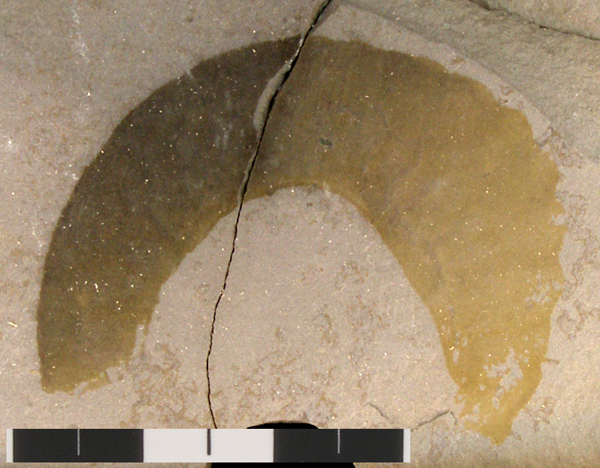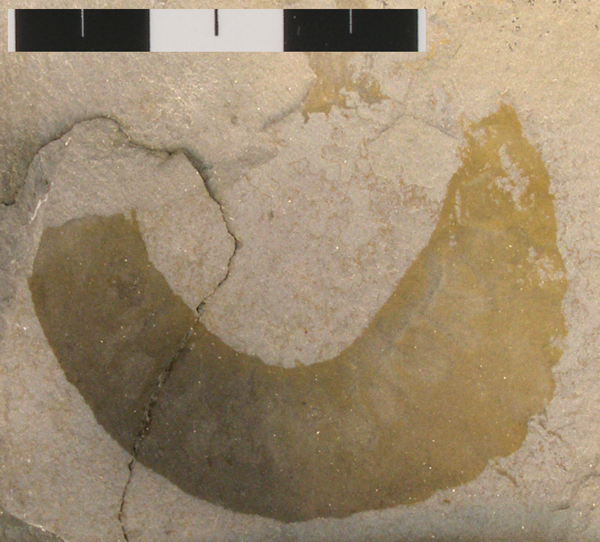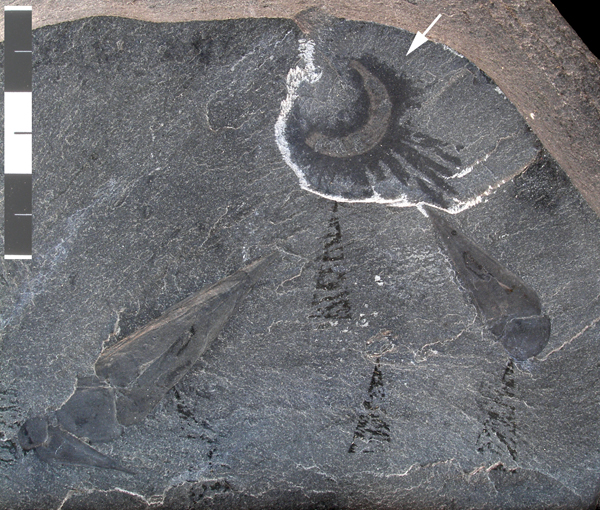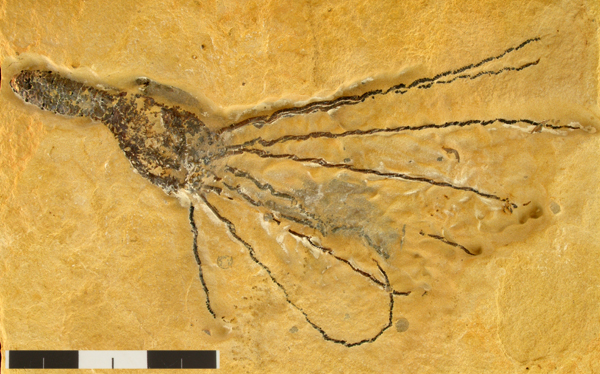

Echinoderms
Modern members of the phylum Echinodermata include familiar forms such as starfish and sea urchins, as well as perhaps less familiar forms such as sea cucumbers and crinoids. Many groups of Paleozoic echinoderms were very different from modern species and in some cases are very difficult to classify.
One such example is Eldonia ludwigi, a species first described by Walcott (1911b) from the Burgess Shale, but which is also known from the Middle Cambrian of Utah. It is thought that this species might have been a type of floating sea cucumber, though discussions about its affinities continue.
Another type of echinoderm fossil found in the Middle Cambrian of Utah is Gogia spiralis, a member of an extinct group of echinoderms called "eocrinoids" which lived attached to the sea floor. While the specimen of G. spiralis shown below lacks preservation of soft parts, it is included here because it is a characteristic member of the Middle Cambrian fauna.
Gallery of Echinoderms
Note: Marks on all scale bars are centimeters (cm).
Eldonia ludwigi Walcott, 1911b
KUMIP 204371 (Part, counterpart). Marjum Formation, House Range, Millard County, Utah. Figures 28.1a, 28.1b in Conway Morris & Robison, 1988.


KUMIP 204370. Spence Shale Member of the Langston Formation, Wellsville Mountains, Box Elder County, Utah. Figure 27 in Conway Morris & Robison, 1988. Arrow indicates Eldonia specimen; other fossils are hyolithids.

Gogia spiralis Robison, 1965
KUMIP 314064. Wheeler Formation, House Range, Millard County, Utah.

© Copyright 2008. Division of Invertebrate Paleontology, University of Kansas. Images may be used for educational/non-profit use without permission. For other requests, please contact kumip@ku.edu